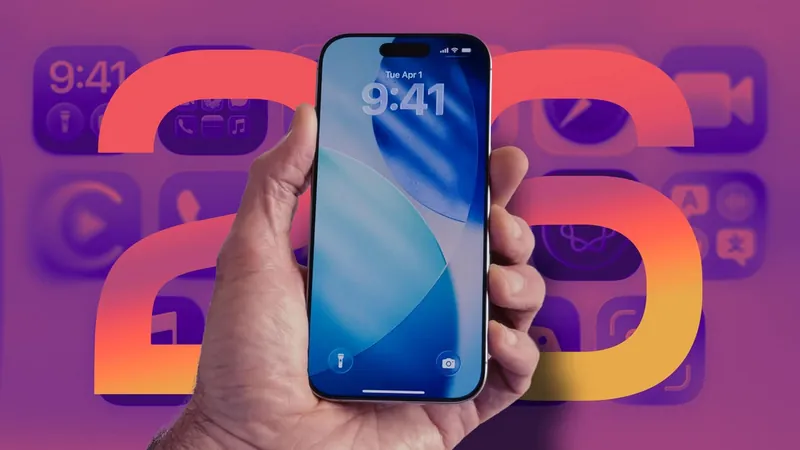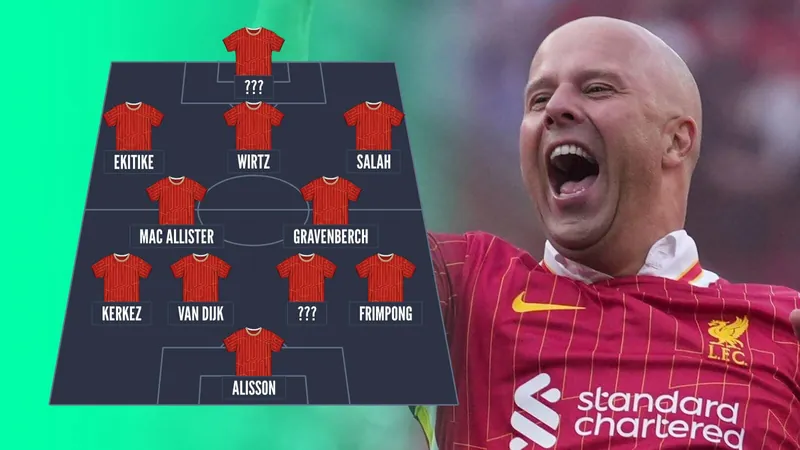
Apple Shifts Focus at WWDC 2025: Less AI, More Design
2025-06-10
Author: Arjun
At this year's WWDC, Apple delivered a refreshing twist, stepping back from last year's AI frenzy to reassert what truly defines their brand: exceptional design and functionality. While some may view this as a downshift, it's a much-needed return to simplicity amid an AI-obsessed tech landscape.
Craig Federighi, Apple's Senior VP of Software Engineering, wasted no time addressing the elephant in the room—the highly-anticipated AI-enhanced Siri was missing in action, with further updates delayed. "We’re continuing our work to deliver features that make Siri even more personal," he remarked, hinting that quality takes precedence over speed.
This year, AI took a backseat, allowing Apple's classic design ethos to shine. The spotlight was on their stunning new Liquid Glass redesign set to roll out with iOS 26, as Apple’s leaders celebrated the elegance and practicality of their software.
Despite some minor AI enhancements, like smarter poll suggestions in iMessage and new features to improve your iPhone's battery life, the overall focus was squarely on design, with Apple's commitment to detail underscored by VP of Human Interface Design, Alan Dye. This insistence on thoughtful software design is perhaps Apple's way of re-establishing why they’ve been at the forefront of tech.
While the practical improvements like Live Activities on Mac and Call Screening on iPhone may seem subtle, they reflect a shift back to user experience rather than buzzword-heavy AI gimmicks. In an era where flashy AI features dominate tech presentations, Apple's decision to elevate functionality over hype feels like a strategic win.
Survey results from CNET reveal a lukewarm reception to mobile AI, with only 11% of U.S. adults upgrading for AI features. In a landscape where competitors like Google and Samsung race ahead, Apple’s more reserved approach to AI might be a smart move. The company’s previous attempts at AI, including notification summaries and image generation tools, have led to delayed promises—most notably a revamped Siri, which may not arrive until 2027.
Analyst Paolo Pescatore noted that while Apple appears to lag behind, the demand for AI is tepid, with many users not seeing its value. Apple’s gradual introduction of AI features aims to enhance user confidence without overwhelming them.
WWDC 2025 painted a picture of a more grounded Apple, one that prioritizes design and practical software updates over grandiose AI promises. With every update, Apple seems to be curating a more enjoyable experience for users—whether through real-time language translation or new customer service features.
As IDC's senior research director, Nabila Popal put it, Apple’s decision to stay measured this year might better serve its brand. Only time will tell if this new pace will satisfy consumers, but so far, the response appears to be positive.


 Brasil (PT)
Brasil (PT)
 Canada (EN)
Canada (EN)
 Chile (ES)
Chile (ES)
 Česko (CS)
Česko (CS)
 대한민국 (KO)
대한민국 (KO)
 España (ES)
España (ES)
 France (FR)
France (FR)
 Hong Kong (EN)
Hong Kong (EN)
 Italia (IT)
Italia (IT)
 日本 (JA)
日本 (JA)
 Magyarország (HU)
Magyarország (HU)
 Norge (NO)
Norge (NO)
 Polska (PL)
Polska (PL)
 Schweiz (DE)
Schweiz (DE)
 Singapore (EN)
Singapore (EN)
 Sverige (SV)
Sverige (SV)
 Suomi (FI)
Suomi (FI)
 Türkiye (TR)
Türkiye (TR)
 الإمارات العربية المتحدة (AR)
الإمارات العربية المتحدة (AR)